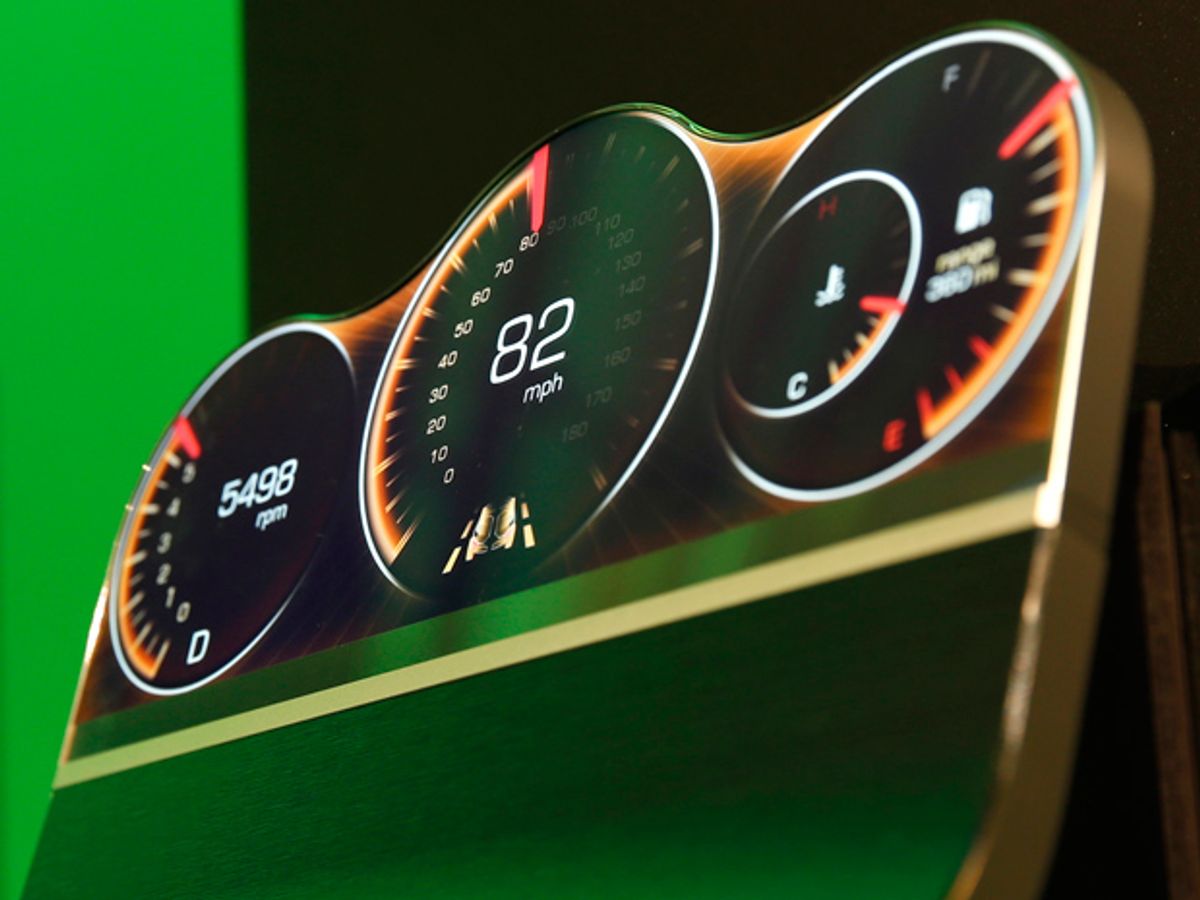Every year at CES, there's A Thing that emerges. It might be a feature, a trend, or even an entirely new class of device, but it ends up being The Thing that people are talking about all week.
On Monday, CES Press Day, major electronics manufacturers like LG, Samsung, and Sharp told us what The Thing was going to be: big, curved, 4K resolution TVs. These new TVs certainly are big and curvy and 4K, but I'm pretty sure that they're not The Thing; for CES 2015, The Thing is actually wearables.
The way to look at TVs this year, I think, is not as the next piece of expensive electronics that's going to end up in your living room, but rather as the predecessors to what will help wearables become as common and integral to our lives as smartphones.
By Monday afternoon, it became clear that TV manufacturers have finally given up trying to convince us that 3D is a thing that we all desperately need. And really, nobody seemed to want it in the first place. What this means is that manufacturers had to find some other things to convince consumers that it's worth upgrading their TVs, like 4K resolution, or a curved screen.
Personally, I don't care a jot about either of these new things. Yours truly, being a 30-something tech curmudgeon, is still skeptical that more pixels really mean a better TV experience for the vast majority of programming. And as for the curved displays that are supposed to make the experience of watching TV more immersive? Although I failed to avoid standing in front of what seemed like a thousand curved TVs yesterday on the show floor, I never once got that feeling—unless I was close enough to the screen to freckle.
What’s interesting, though, is projecting ahead and imagining what advances in TVs will yield in just a few years. I'm talking about being able to manufacture displays that aren't flat, and maybe aren't even simple curves, but instead can be molded, contoured, and customized to fit our lifestyles. We're already seeing some of this potential for versatility with Sharp's Free-Form displays, which can be made into any shape you want:
Making small displays for specific purposes also underscores the importance of high resolution, where you have to be able to pack a lot of information into a small, potentially weirdly shaped display without sacrificing clarity.
There are other things that manufacturers emphasized this year, many of which are the same ones that are emphasized every year: Thinner. Brighter. Blacker. Sharper. More colorful. As far as TVs go, these are generally incremental improvements at best, but stuff like this really matters most when displays get smaller and more portable. I don't need a brighter TV, because I watch my TV inside, in my living room. I do need a brighter cell phone, because I use it outside in direct sunlight. For example, there's been a lot of buzz about TVs using quantum dots. But can we just skip the TVs and put them into mobile and wearables instead?
Wearables may be The Thing at CES this year (at least, that's what I think), but it's how wearables and mobile technology will be changed by evolving displays that make displays themselves what's next. Right now, both wearables and mobile are heavily constrained by displays, partially in form factor, but more importantly in battery life. There are a bunch of new technologies that we're just starting to see implemented that could make a huge difference: long range wireless charging; ultra low power E-Ink displays that now come in colors; or even compromises, like the YotaPhone2, an android cellphone that has a regular screen on the front, but an E-Ink screen on the back with nearly identical functionality. Use the E-Ink screen most of the time, and you're looking at up to six days of battery life on a single charge:

When displays are small, sharp, bright, energy efficient, and able to adapt to any form factor, wearables won't just be everywhere: they're going to be everywhere and practical, which is a place that they're really not in right now. There's a huge glut of wearables at CES this year, and over the next few years, most of them are going to go through a Darwinian reality check and vanish completely. But I'm betting that the ones that stick around, and the ones that come next, are going to be those with the best displays. And so, at CES 2016, I'll go right back to looking at all of the brand new TVs and saying, "Wow, that's cool! I can't wait to upgrade to that display in my next smart watch!"
Evan Ackerman is a senior editor at IEEE Spectrum. Since 2007, he has written over 6,000 articles on robotics and technology. He has a degree in Martian geology and is excellent at playing bagpipes.




